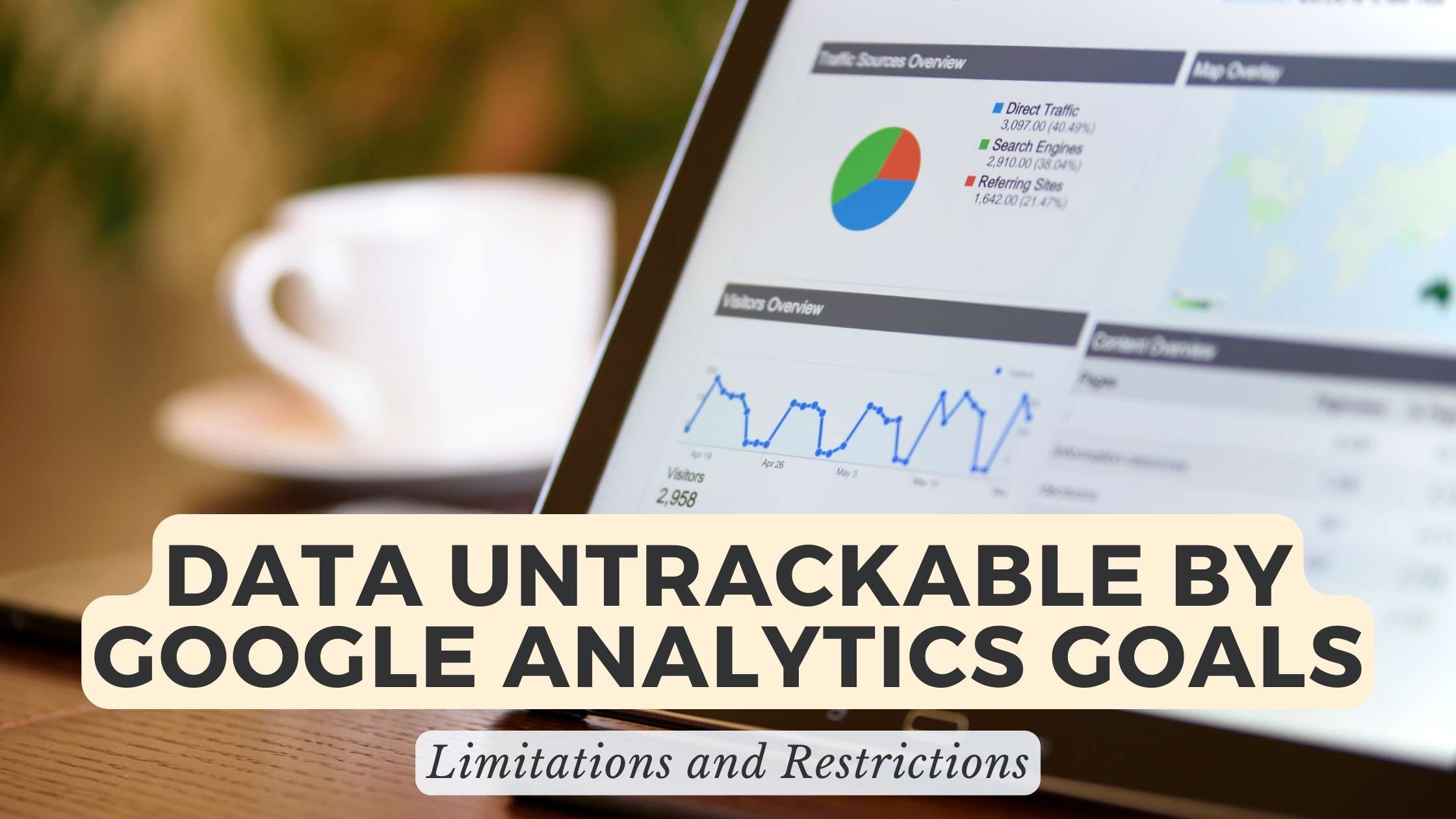Data Untrackable by Google Analytics Goals: Limitations and Restrictions
- Data as a Service (DaaS) Software Marketing & Analytics


Data Untrackable by Google Analytics Goals: Limitations and Restrictions
Google Analytics is a powerful tool for understanding user behavior on websites, providing valuable insights into the effectiveness of online strategies. However, there are certain aspects of user interactions and data that Google Analytics goals may be unable to track. In this article, we explore the limitations and restrictions of Google Analytics goals, shedding light on what data remains untrackable and how businesses can address these challenges.
Understanding the Limitations of Google Analytics Goals
1. Interaction with PDFs and External Links
Google Analytics goals might struggle to capture interactions with PDFs or clicks on external links leading to third-party websites. As these actions take users outside the tracked domain, they may not be fully accounted for in the goal tracking metrics.
2. Cross-Domain Tracking Challenges
When a user navigates between different domains, Google Analytics may encounter difficulties in maintaining a seamless tracking experience. This is particularly relevant for businesses with multiple websites or e-commerce platforms.
3. Forms Filled by Autofill or Pre-filled Passwords
In cases where users leverage autofill features or pre-filled passwords, Google Analytics goals may not accurately track form submissions. This is because the typical JavaScript events associated with form submissions might not be triggered.
4. Ad-Blocker Interference
With the rise of ad-blockers, some user interactions, especially those related to ads, might go unnoticed by Google Analytics goals. This limitation can impact the tracking of ad clicks and impressions, affecting the accuracy of marketing campaign analysis.
SaaS Solutions to Enhance Tracking Accuracy
1. Hotjar
Hotjar provides visual insights into user behavior through features like heatmaps and session recordings. It complements Google Analytics by offering a more visual representation of how users interact with a website, addressing some of the limitations in tracking.
2. Segment
Segment acts as a customer data platform, enabling businesses to collect, clean, and control their customer data. It facilitates more comprehensive tracking by unifying data from various touchpoints, including those that may be challenging for Google Analytics goals.
3. Matomo (formerly Piwik)
Matomo is an open-source web analytics platform that allows businesses to have full control over their data. With Matomo, organizations can set up goal tracking that aligns more closely with specific business objectives.
4. Crazy Egg
Crazy Egg offers insights through tools like heatmaps and scrollmaps. It aids in understanding user behavior, especially in areas where Google Analytics might face limitations, such as tracking clicks on external links.
5. Finteza
Finteza provides real-time analytics with a focus on accurate traffic measurement. It offers insights into user interactions, helping businesses overcome some of the challenges posed by Google Analytics limitations.
Conclusion: Navigating Analytics Limitations with Precision
As businesses strive for accurate insights into user behavior, understanding the limitations of Google Analytics goals is crucial. By incorporating supplementary tools and platforms, organizations can enhance their tracking capabilities and gain a more comprehensive understanding of user interactions.
In the realm of SaaS management, Subscribed.FYI emerges as a valuable ally. By centralizing information and offering insights into a wide range of SaaS tools, Subscribed.FYI empowers businesses to make informed decisions about their software subscriptions. It ensures that the complexities of managing SaaS tools and expenses are simplified for freelancers, agencies, and teams.
Relevant Links:





